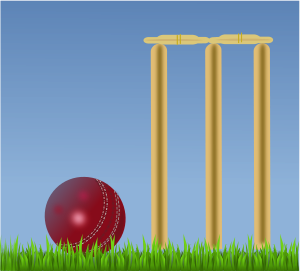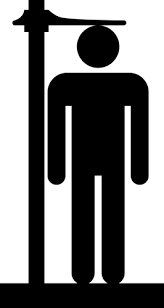Plots
Chapters
Stem and Leaf Plots
Stem and Leaf Plots
A stem and leaf plot is a table with two columns that is used to display data. Each data value is split up into two parts: a stem (the first digit or digits of the data value)
and a leaf (the remaining digits of the data value). When making a stem and leaf plot, you should always provide a key that tells your reader what the meanings of the stem digits and the leaf digits
are.
The stem digits are placed, one per line, in a column going downwards. The leaf digits corresponding to each stem digit are placed in a row from left to right (or right to left) from the stem value.
A stem and leaf plot provides us with a way of grouping our data: the leaf values show the individual values in the group created by the stem.
Let's have a look at an example.
Example

Sam's cricket coach has asked him to make a stem and leaf plot of the numbers of runs scored by members of the school cricket team over the last three matches. He has the following list of data:
He decides to group the data, according to their tens digits. So, he will have stems of 0, 1, 2, 3 and 4. Next he has to enter the data into his table. He draws two columns: one for the stems and one for the leaves. To put 9 into his table, he has to select the tens digit (0), and then enter the units digit (9) as a leaf corresponding to the stem 0. To put 23 into his table, he selects the tens digit (2), and then enters the units digit (3) as a leaf corresponding to the stem 2.
It is much more efficient if he sorts the data first before entering it into his table. Here is the completed stem and leaf plot:
| Stem | Leaf |
|---|---|
| 0 | 9 |
| 1 | 1 2 9 |
| 2 | 3 6 8 |
| 3 | 2 |
| 4 | 1 5 |
Underneath the table, he should write a key like 'Stem "2" Leaf "3" means 23' so that people know what each value represents.
Back-to-Back Stem and Leaf Plots
Sometimes, back-to-back stem and leaf plots are used when people want to compare two sets of data.
A back-to-back stem and leaf plot is like two plots for the price of one. It has three columns. The middle column represents the stem. One data set is displayed as a set of leaves to the right of the stem, and the other data set is displayed as a set of leaves to the left of the stem. Otherwise, the rules for constructing a back-to-back stem and leaf plot are the same as for a stem and leaf plot. Let's look at an example
Example

Sam's Health and Physical Education Teacher has decided that he'd like to compare the heights of the students in two of his Year 10 classes: 10N and 10R. He has decided to use a back-to-back stem and leaf plot to help with the comparison. Here is his plot:
| 10N | Stem | 10R |
|---|---|---|
| 9 8 7 4 3 | 14 | 0 1 |
| 7 6 5 4 2 2 1 1 | 15 | 5 7 8 9 |
| 9 8 4 | 16 | 1 3 4 6 |
| 9 3 | 17 | 2 2 7 7 8 9 |
| 1 | 18 | 1 5 6 9 |
Underneath the table, he writes t he key like 'Stem "16" Leaf "2" means 162 cm so that people know what each value represents.
The side by side comparison shows that students in 10 R are generally taller than students in 10 N.
Description
In these chapters you will learn more about
- Histograms
- Scatter plots
- Stem and leaf plots etc
these lessons are for students studying maths in Year 10 or highter
Audience
Year 10 students or higher, however, suitable for Year 8+ students too.
Learning Objectives
Learn about plotting
Author: Subject Coach
Added on: 28th Sep 2018
You must be logged in as Student to ask a Question.
None just yet!